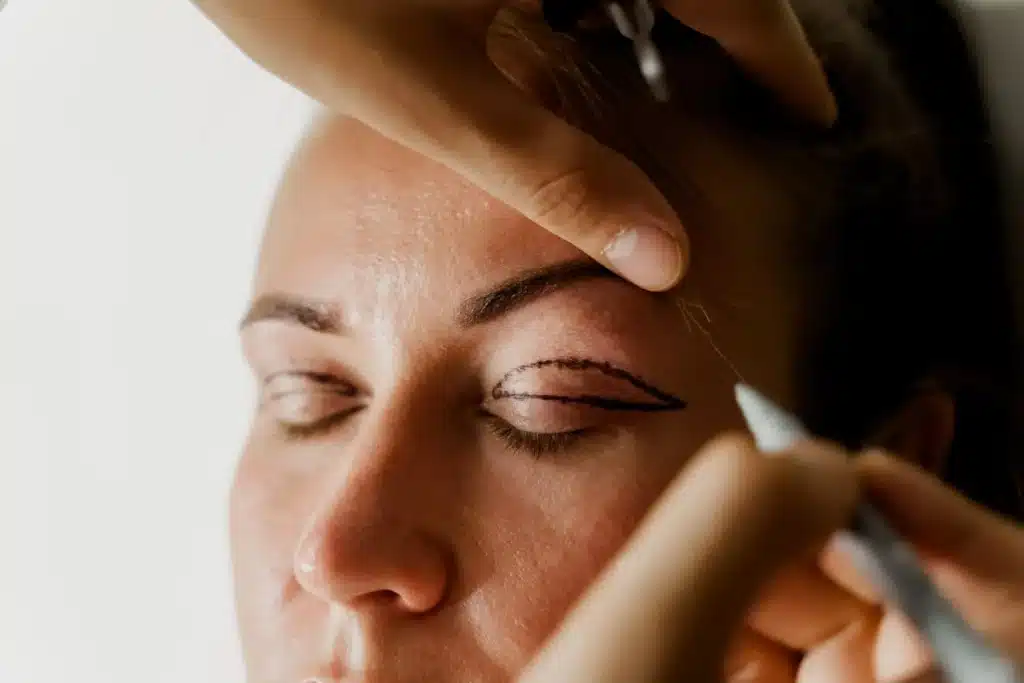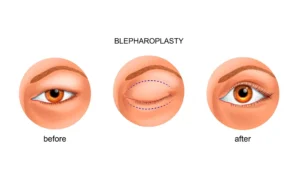One of the biggest downfalls of the natural aging process is its effect on both the health and appearance of skin. It’s one of the primary reasons why so many people fear growing old, as they try to preserve their youthfulness for as long as humanly possible. Unfortunately, there’s no running away from the inevitable.
Some of the most common signs of aging skin include wrinkling and/or sagging, a dulled and/or uneven complexion, dryness, dehydration, thinning, loss of texture, and aging spots (blemishes). It can appear anywhere you have skin, but most people tend to fear it most when experienced on or near the face.
And since most people make eye contact when interacting with one another, the eyes are an especially sensitive area to experience signs of aging. For example, many people will notice their eyelids starting to droop as they age, the skin around the eyes starting to sag, or bags starting to form around the eyes.
What is an Eyelid Lift?
While we can’t reverse or stop the natural aging process – it’s going to happen whether you like it or not – there are a multitude of things we can do to slow the process down and preserve that youthful appearance as best as possible. One of those ‘things’ is eyelid surgery, also known as blepharoplasty.
And while eyelid surgery is often used for cosmetic reasons, there are also a number of conditions and/or defects that might call for the procedure – such as:
- Eyelid ptosis (droopy eyelids or sagging upper eyelids that might cause vision impairment)
- Excess eyelid skin
- Ectropion (lower eyelid droops down and turns outward)
- Entropion (lower eyelid turns in toward the eyeball)
- Fatty deposits in the eyelids (puffy eyelids)
- Bags under the eyes
- Loose or sagging skin around the eyelids
During a lower or upper blepharoplasty procedure, a surgeon can remove excess skin, muscle, tissue, and/or fat to improve the appearance, function, or health of the eyelids. It can be done on the lower lid, upper lid, or both. If you have drooping, sagging, or baggy eyelids, then an eyelid lift might be for you!
Who is a Good Candidate for Blepharoplasty?
Blepharoplasty can be a difference-maker in an individual’s life, but that doesn’t mean it’s right for everyone. At the end of the day, blepharoplasty is surgery and there are a number of risks involved – just like all the other facial surgery procedures. For that reason, patients must be approved for the procedure before undergoing it.
Here are just some of the general requirements or traits that might make you a good candidate for eyelid surgery:
- You are above the age of 30
- You are a healthy individual free of medical conditions
- You don’t smoke
- You have reasonable expectations
- You don’t have any serious eye problems
- Your eyelids obstruct your vision
- You’re unhappy with your eyelid appearance
Blepharoplasty complications are rare, but possible – as with any surgery. Some of the rare complications include dry eyes, bleeding, infections, eyelid discoloration, eyelid skin folding in or out, inability to fully close eyelids, and vision loss. To reduce and prevent risk, always follow the direct advice of your doctor.
How to Find a Quality Blepharoplasty Surgeon
Finding a talented, experienced, and quality blepharoplasty surgeon is the single most important factor to the success of your procedure. You not only need someone with the tools and equipment necessary, but you need someone you feel comfortable with – it helps relieve some of the stress that comes with it.
Here are some of the qualities to look for when determining who is the best surgeon for blepharoplasty:
- Make sure they’re board-certified in ophthalmology or plastic surgery
- Find a surgeon that has treated someone with similar issues in the past
- Always make sure your doctor accepts your insurance before moving forward
- Find someone who explains things clearly and answers all your questions directly
- Don’t be afraid to ask around for recommendations, including from your other doctors (primary doctor, for example)
- Positive online reviews and testimonials can give you a great idea of what the surgeon is like
Once you find the right surgeon, you can schedule an appointment with them to go over expectations and goals for the procedure. The actual surgery usually takes 1-2 hours, depending on the exact work being done. The healing and recovery process generally takes anywhere from one week to several weeks.
Frequently Asked Questions About Blepharoplasty
Blepharoplasty is a surgical procedure that many people have never heard of before – in fact, most people won’t even know how to pronounce it (ble·pharo·plas·ty, for those wondering). With that said, it’s natural for patients to be bursting with questions as they attempt to learn as much as possible about it.
Hopefully we can answer some of those questions below:
- How much does blepharoplasty cost? Most patients can expect to pay several thousand dollars for cosmetic eyelid surgery, but there are a number of factors that play a role in the final cost.
- How long does blepharoplasty last? For the most part, an upper eyelid surgery will last anywhere from 5-7 years, while lower eyelid surgery is nearly permanent.
- How to massage lower eyelid after blepharoplasty? It’s best to massage the eyelids in an upward and outward motion, kind of like you’re pushing up the outer corners of your eyelids.
- Can blepharoplasty remove wrinkles and/or fine lines? While blepharoplasty won’t remove wrinkles, dark circles, and/or fine lines, some people might see some wrinkles reduced as the skin tightens.
- Is the blepharoplasty procedure painful? Although some discomfort should be expected, especially in the hours and days following the surgery, patients shouldn’t feel any extreme amounts of pain.
- Are you allowed to drive home after blepharoplasty surgery? Since patients aren’t allowed to drive after eye surgery, they should arrange to have someone drive them home.
Are you interested in learning more about blepharoplasty? Do you want to see if you’re a good candidate for upper and lower eyelids surgery? Don’t worry, Milwaukee Eye Surgeons is here to help and we’re always accepting new patients! Call 414-377-5550 or email: info@MilwaukeeEyeSurgeons.com to schedule an appointment!




